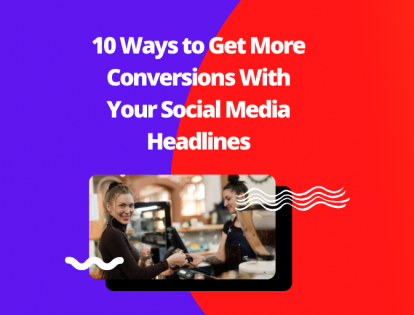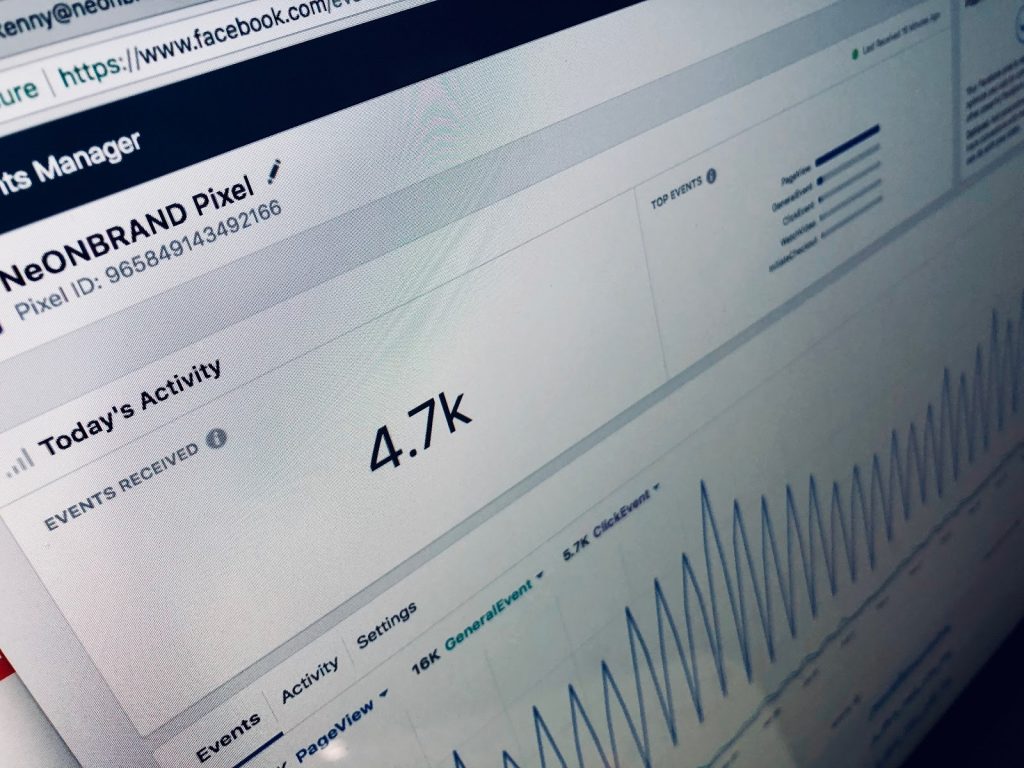8 out of 10 people only read the headlines to your posts.
If someone gets past the headline, they’re actually in the minority.
Think about it this way: if this article had a title called “Conversions” or “Conversions Advice” or something from that spectrum, you would’ve probably skipped this article. Content is important, but good content needs a good headline.
This might not be surprising given our fast-paced consumer culture and our shortening attention span, but it certainly is important when it comes to building your online presence.
If you want to optimize your conversion rates using social media, then click-worthy headlines are a must. You simply can’t do without them.
This article is going to be all about how you can craft attention-grabbing headlines that drive more traffic and revenue growth for your business.
And don’t worry, we’ll keep it short – since you won’t stick around for long.
Here are our top 10 smartest tips for creating powerful headlines that get more clicks:
1. Use simple language
The words and tone you use in your headline don’t have to be elaborate to be impactful. In fact, the opposite is usually true. Simple language works better because it can be scanned through quickly and it gets your message across fast, without any fluff that gets in the way.
If your headline is bland, too technical, or uninspiring, you’re going to lose a majority of your readers along the way. So, the first thing you want to do when writing a headline is to make sure that you’re not turning your audience away because of the language you use.
The second thing you want to do in terms of headline writing is to make sure it’s powerful. People feel more drawn to headlines that use a ‘call-to-action”, for example, or to headlines that address them directly. You can find out more about how you can make the headlines personal and how to add a “call-to-action” below.
2. Make it personal
Never beat around the bush with headlines – address your reader directly. Using words like “you” or “your” will make your audience feel like the article they’re about to read is all about them. It also helps in terms of user engagement and in terms of connection. Whatever your strategy, always go in hard. If you’re playing on a pain point, don’t be elusive about it. Similarly, if you’re trying to build on the fear of missing out, tackle that head-on.
Make it clear to your audience that you get where they’re coming from, you understand their problem, and you’re here to help. Then offer them the solution.
3. Focus on what they’ll get
With headlines, you need to always lay out the benefits as soon as possible. What will your prospects get if they click your link, go to your landing page, or purchase your product? What’s in it for them if they invest their time into reading (or more likely skimming through) your post?
Another important tip here is that you always use a benefit headline instead of a teasing headline. The latter refers to phrases like “we’re great at” or “we’ll exceed your expectations” that are virtually meaningless without knowing what the underlying copy is (and sometimes even then, they tend to oversell).
Instead, opt for concrete benefits. Showcase exactly what your post, product, or brand can do for your customers and how the solutions you’re offering will help them overcome the challenges they face.
4. Add power words
Always aim to include a power word in your headline. These have been proven to increase conversions. They hook consumers because they play on their emotions or bias in order to trigger a specific psychological reaction that motivates them to take action. Power words are compelling to people and they are also attention-grabbing.
If you’d like to learn more about power words and how to use them successfully (not all power words are equally effective), we’ve written a whole post about it here.
5. Include a clear call-to-action
A highly effective strategy that you can use when crafting headlines is to include a compelling call-to-action in the beginning, followed by the benefit. This will spur curiosity, as well as a sense of urgency that makes it hard to resist clicking.
Some powerful CTAs you can use include: “find out”, “click here”, “read this before […]”, “watch our […]”, or “download now”.
What is important to bear in mind when it comes to CTAs is that they have to be used in close relation to your audience. Using a CTA that is not tailored to the needs of your audience might have the opposite effect.
6. Consider using numbers
Numbers are everywhere. Whether it’s a listicle or a shocking statistic, starting off your headline with a number can boost interest and increase dwell time on your actual post. Make sure you’re writing the numbers, though, since they are easier to process: for example, 8 is easier to be processed by the brain than “eight”. Using numbers in your headlines can also let your audience know that the article will be easy to read and digest.
If you’re using this strategy, keep in mind that odd numbers have a 20% higher clickthrough rate than headlines with even numbers.
7. Don’t mislead your audience
This should go without saying, but misleading prospects with your headlines is a losing strategy. It not only costs you profit (because your leads end up leaving your website disappointed that they didn’t find what they were promised), but it also costs you trust and credibility in the long run.
Driving traffic is important, but not damaging your reputation in the industry is equally important. And getting a few clicks is never a good enough tradeoff for the latter.
Being straightforward with your headlines also ensures that you’re converting the right leads, since not every prospect will be a good fit with your brand.
Driving traffic is important, but not damaging your reputation in the industry is equally important.
8. Experiment with different versions
This is a big one. No headline is perfect. There is always room for improvement and you can always find things to learn from previous headlines (even if wildly successful). You want to constantly test different versions, formulas, and styles when it comes to the headlines you share.
Look back in your history and see which ones performed well in order to come up with ideas for future headlines and maximize conversions. You can also use tools to check the bounce rate and see any link between how long a user is willing to stay on your website and the headline that first drew them in.
Brain-storming is another thing you might want to put into practice: finding the best headline from the beginning is not the easiest thing to do. But when you have enough words to choose from and mix accordingly, the results might be surprising. You just need to make sure that they’re still relevant to your business and target audience.
9. Rate your headlines
Keep score of your top headlines that yielded the highest conversion rates. Compare not only the effectiveness of each headline but also all of the elements that made it successful. Create an evaluation system and over time gather data so you can put together a checklist of must-haves for a click-worthy headline.
There are a few things you can take into consideration when it comes to rating your headlines. First, you can look at the headline length and see what works best for you. Word balance is another must, as titles that are too short or too long might just not do the trick.
The headline type is another element that can help you figure out what your audience responds to. Lastly, the emotion your headline evokes could be another indicator of your headline success.
10. Remember that this isn’t an exact science
The things that work for some brands might not necessarily work for others. It’s important to keep in mind that the process of you developing a high-value headline will be unique for your business.
This is why it’s important to have a checklist that’s personalized for your brand and tailored for your target audience. Doing this will ensure that you’re getting the most you can out of your specific niche.
Bottom line
Remember, 8 out of 10 people only read the headlines to your posts. And you have reached the end of this post about headlines, which means that it caught your attention. This is exactly what the purpose of this article is.
Writing a catchy headline is important, and it is a vital part of your social media posts. Valuable content cannot exist without the headline and the other way around. Finding the balance between these two can ensure your success in terms of reach, shares, and likes, and it also ensures that your point gets across.
Interested in what makes your customers click?
Find out more about social media marketing and driving traffic with the right headlines in our free, in-depth, and actionable copywriting guide for brands that want to build strong customer loyalty and streamline their growth strategies.
AUTHOR BIO
 Ovi Negrean is the CEO and Co-Founder of SocialBee.io, one of the most user-friendly social media management tools on the market. He and his team help startups, small businesses, freelancers, and entrepreneurs reach their marketing goals through keyword-informed and customer-driven articles, as well as innovative social media content.
Ovi Negrean is the CEO and Co-Founder of SocialBee.io, one of the most user-friendly social media management tools on the market. He and his team help startups, small businesses, freelancers, and entrepreneurs reach their marketing goals through keyword-informed and customer-driven articles, as well as innovative social media content.
LinkedIn Profile: https://www.linkedin.com/in/ovidiunegrean/
Twitter Profile: https://twitter.com/OviNegrean



